GST Services
What is GST?
GST is the full form of Goods and Service Tax. It is government tax that is levied on the supply of Goods and Services. Most of the countries have implemented GST. Some of them are India, Canada, Australia, Vietnam, Singapore, Spain, United Kingdom, Brazil, Monaco, Italy, Nigeria, and South Korea. Each country has its own rules and regulation on calculating GST. For example, Australia has 10% of GST on most goods and services. If you look at india, it has 0% to 28% of GST depending on the item’s nature.
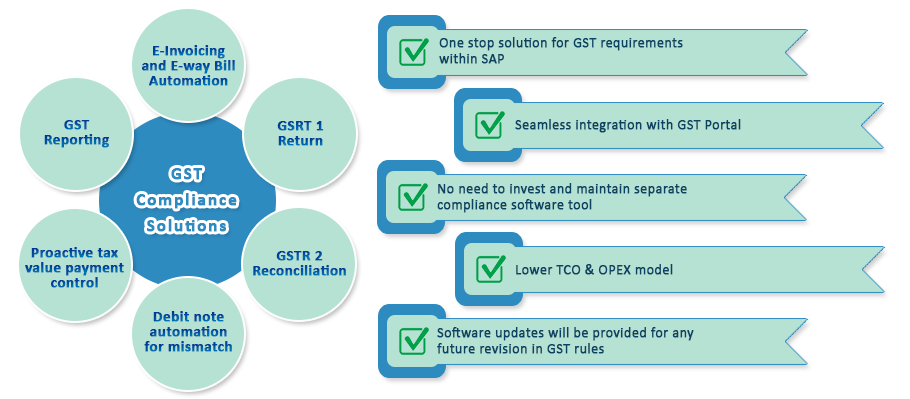
GST Services
E-Invoice
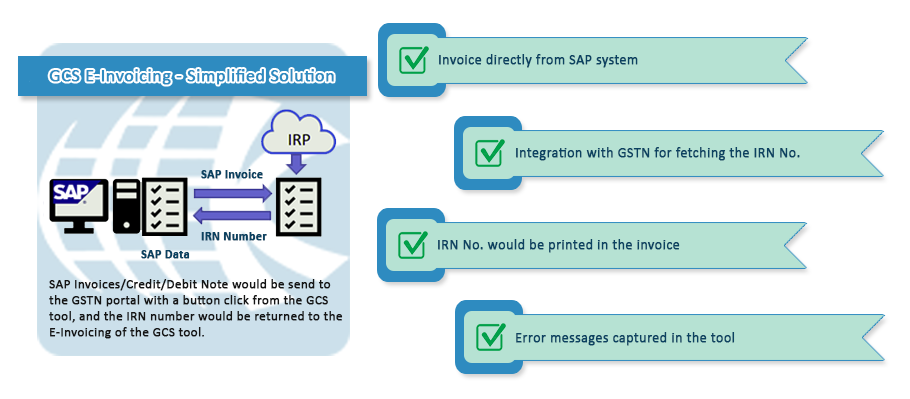
E-Invoicing or electronic invoicing is a process of an utility system where GSTN is used to authenticate B2B invoices. So that it can be on common GST portal furthermore. The following are the benefits of E-Invoicing
- 1. Reduces mismatch errors
- 2. Allows interoperability and reduces data entry errors
- 3. Real-time tracking
- 4. Final preparation
- 5. Go Live support
E-Way Bill
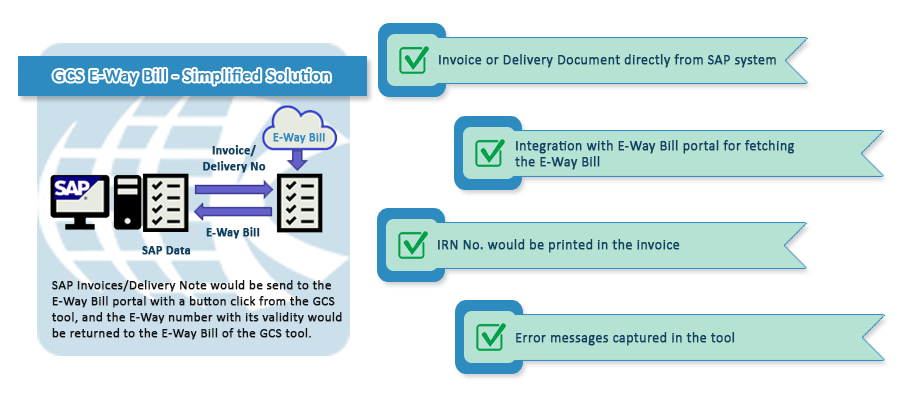
E-Way Billis just like other e-bills and it is called as E-Way Bill because the bill is generated on the E-Way Bill Portal. GST registered person cannot transport goods in a vehicle whose value exceeds Rs. 50,000 (Single Invoice/bill/delivery challan) without an e-way bill that is generated on ewaybillgst.gov.in.
Alternatively, E-Way Bill can also be generated or cancelled through SMS (Short Message Service), Android Mobile Application and by website portal integration through API
GSTR 1 Reconciliation
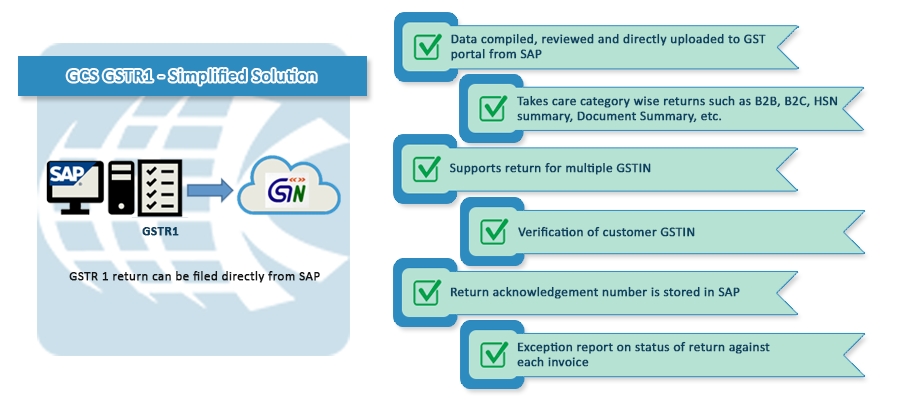
GSTR – 1 is a tax return which is filed monthly or quarterly by taxpayers to reveal details of their outward supplies for the month along with their tax liability. Here, invoice-wise details are to be uploaded so that the Government can keep a track of every transaction. After filing GSTR -1, businesses have to file GSTR – 1.
GSTR 2 Reconciliation
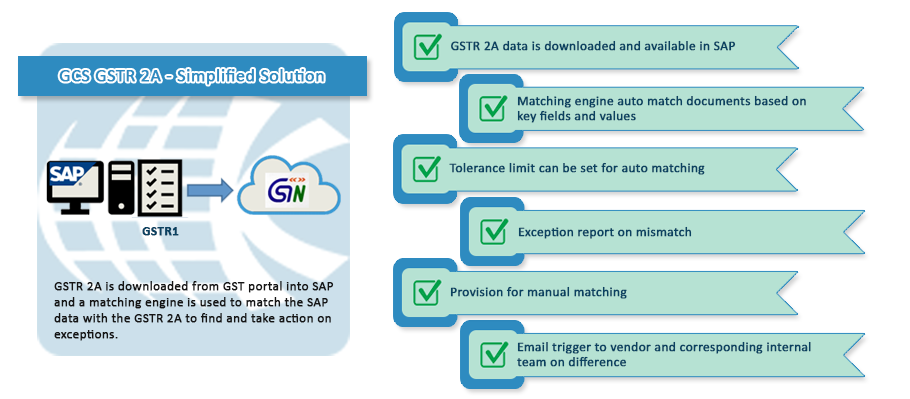
GSTR-2 is a tax return that contains details of your monthly purchases / inward supplies. It is compulsory to all GST registered businesses to file their GSTR-2 after filing GSTR-1. A GSTR-2A report will be auto-generated in the GSTN Portal when your vendors have filed their sales return (GSTR-1) so that you can verify all data before you file your return.
Other Services
Debit Note Automation
- Debit note can be raised for the unresolved difference beyond threshold period
- Threshold period can be configured for the auto debit note
- Provision for reversal of debit note in case the difference is resolved by the vendor in subsequent returns
- Except on report to keep track of these debit notes
- Helps to keep track of differences and raise debit notes to vendors in order to prevent tax leakage
- Easy to use tool for raising auto debit notes
- Debit notes can be raised in bulk
- Reduce major workload on staff
Proactive tax value payment control
- Tax value is put on hold in a separate special GL during invoice accounting
- The hold on tax value can be reversed when the vendor return is matched with SAP data
- Vendors can be classified to activate this payment control
- Complete control over input tax credit
- Ownership will be on the vendor to upload proper return in order to claim the payment
- Improves cash flow
- Easy to manage solution within SAP
GST Reporting
- Reports for annual submission
- Comparison reports with financials
- Analysis reports by GSTIN, HSN, vendor
- Reports within SAP
- Reports can be scheduled in background
- Downloadable in Excel


